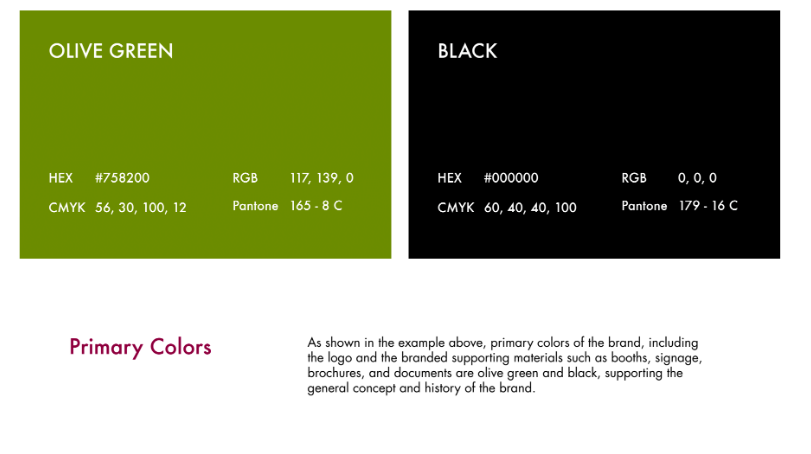Brand books are an essential document for any company which captures the entire brand identity of your business. Also referred to as a brand style guide, it is a compilation of all branding elements associated with your brand. It typically includes a brand story, tone of voice, and company mission, vision, and values to tie it all together. Since a brand book showcases the entire essence of the brand, it’s important to make sure it shines with all its glory, and we’ll help you create a killer one!
Brand Book Contents
The contents of your brand book are more about showing than telling. This is why the visual elements need to have a dominant role in any brand book.
Here are elements that must be included in your brand book:
- Color Palette

The color palette is the first thing viewers encounter when introduced to your brand, even if they don’t realize it. Your brand’s color palette is visible nearly everywhere: from the logo to the company website and throughout social media posts. Whether there are several bright colors you’re working with or just a minimalistic combination, your brand colors must be concisely represented in the brand book. Break it down into primary and secondary (or accent) colors and include their details such as the name and codes of the colors in the most common formats: HEX, Pantone, CMYK, RGB. If certain colors are used in specific locations, may sure to mention the proper usages for them.
- Company logo
Digi-tip: Digilite’s designers always recommend including correct and incorrect usage of the logo in the brand book to avoid major inconsistencies in the future.
The logo is a key feature of your brand, which is why it’s typically the center of attention in any brand book. When thinking of your logo you may only think of a single image, but that is rarely the case. Most brands have a primary (otherwise known as full) logo along with a smaller logo mark. Include what colors or symbols are used in different versions of the logo depending on where it is added. For example, the logo used on the product may be completely different than the one used in an email marketing campaign.
- Imagery and Iconography
Not all businesses use dedicated icons or images in their branding, but more often than not, there are at least a few that are associated with your brand that’s worth mentioning. These can be anything from small symbols used in your logo to buttons on the company website. No detail is too small to include in your brand style guide to make it feel complete.
- Typography
Typography, or font choice, is the last necessary pillar for any brand book. Font choice is not something that is initially decided then forgotten about. It’s an integral part of your branding that shapes the brand identity. Include the name of the font used, possibly elaborate on how the stylistic choice was reached, and different versions of the font such as heading use. Make sure to have a dedicated section for typography whether you have just one primary font or a combination of several.
Taking it to the Next Level
Now that you have the main components of the brand book done in a detailed and creative manner, there are a few extra steps you can take to take it to the next level. First, don’t just lump all the information from the previous bullet points together into one document. Take time to organize all the sections by tying it together with a simple layout, being mindful to not make it too empty or too cluttered. Also, go above and beyond just the bare minimum. Include more detailed sections to give a full picture of the brand. This includes pages for tone of voice, videography, partnerships, social media representation, and more.
Digi-tip: How the brand book is presented says a lot about your business. Showcase your brand with finesse!
Who Sees Your Brand book?
Businesses might put off creating a brand book until they absolutely feel like it’s necessary, such as showcasing it for a partnership or brand deal. In reality, a brand book is an essential to always have on hand and regularly update when there are apparent changes, such as when rebranding. Why? A detailed brand book is a great guide for your team, especially the designers! With every dot and line of your business’ branding choices collected into one neat file, you can easily manage consistency of work across all projects. This also makes it easier for new additions to the team to get a full picture of the company branding to avoid confusion or misinterpretation.
Summing Up
A brand book is a golden key that not all businesses possess and having an effective one can be useful for multiple purposes. It’s important to include key components in great detail that capture every branding element of your product or service. But to get a really killer brand book, you have to be willing to go the extra mile by making it insightful and also stunning. At the end of the day, your brand book represents the entire brand identity to your entire audience.
Trust Digilite’s creative designers to launch your branding – or even rebranding – out of this world today by contacting us!




